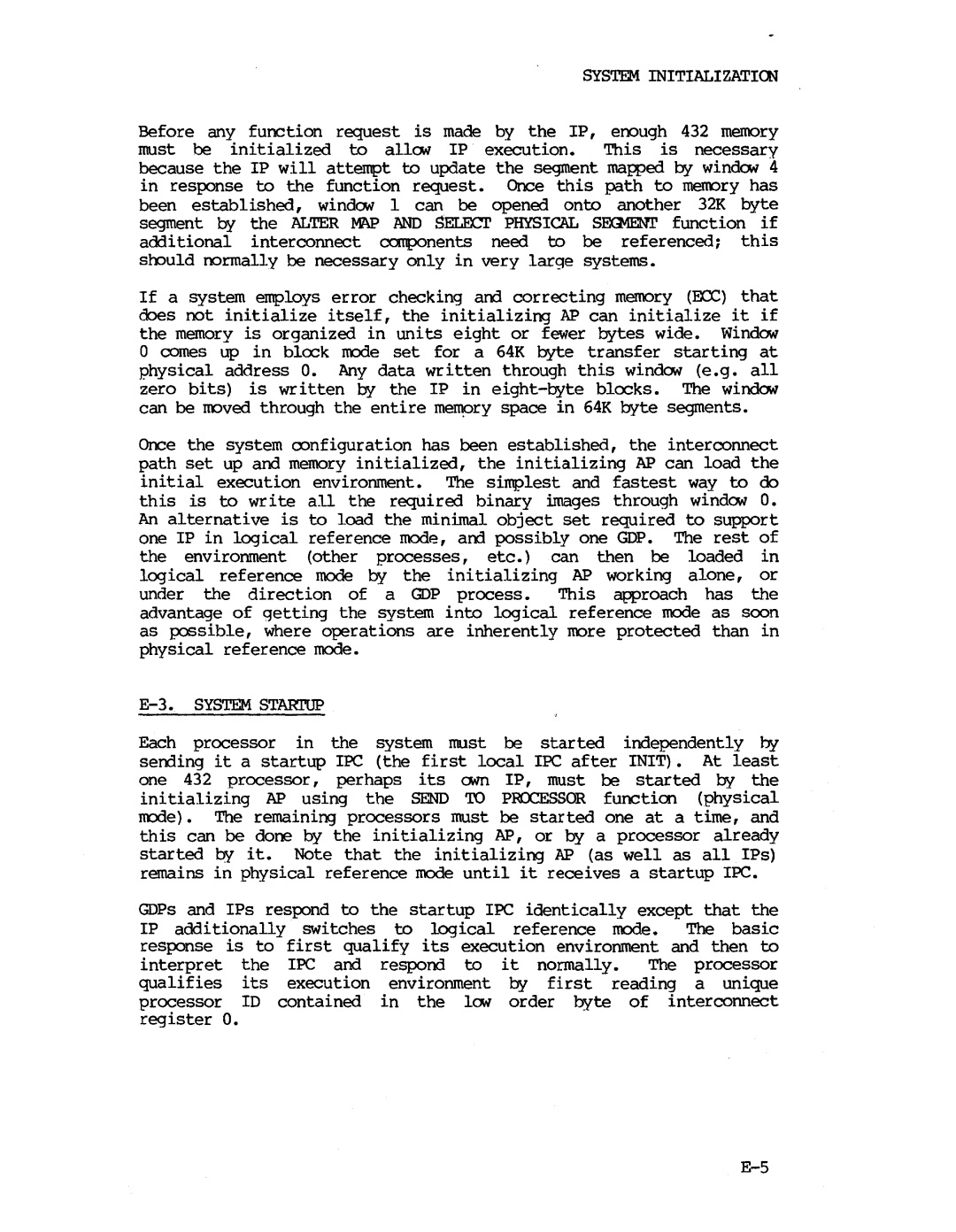
SYSTEM INITIALIZATION
Before any function request is made by the IP, enough 432 memory
must be initialized to allCM Ip· execution. This is necessary because the IP will attempt to update the segment maWed by windCM 4 in response to the function request. Once this path to mennry has been established, windCM I can be opened onto another 32K byte segment by the ALTER MAP AND SELECr PHYSICAL SEGmNT function if addi tional interconnect catpOnents need to be referenced; this should normally be necessary only in very large systems.
If a system employs error checking and correcting memory (EOC) that does not initialize itself, the initializing AP can initialize it if the memory is organized in units eight or fewer bytes wide. Window o comes up in block node set for a 64K byte transfer starting at physical address O. Any data written through this window (e.g. all zero bits) is written by the IP in
Once the system configuration has been established, the interconnect path set up and memory initialized, the initializing AP can load the initial execution environment. The simplest and fastest way to do this is to write all the required binary images through window O. An alternative is to load the min~l object set required to support one IP in logical reference mode, am possibly one GOP. The rest of the environment (other processes, etc. ) can then be loaded in logical reference mode by the initializing AP working alone, or
under the direction of a GOP process. This approach has the advantage of getting the system into logical reference mode as soon as possible, where operations are inherently more protected than in physical reference mode.
Each processor in the system must be started independently by sending it a startup IPC (the first local IPC after INIT). At least one 432 processor, perhaps its CMn IP, must be started by the initializing AP using the SEND TO PRCXESSOR function (physical node) • The remaining processors must be star ted one at a time, and this can be done by the initializing AP, or by a processor already started by it. Note that the initializing AP (as well as all IPs) remains in physical reference mode until it receives a startup IPC.
GOPs and IPs respond to the startup IPC identically except that the IP additionally switches to logical reference mode. The basic response is to first qualify its execution environment and then to
interpret the IPC and respond to it normally. The processor qualifies its execution environment by first reading a unique processor IO contained in the ICM order byte of interconnect register o.
